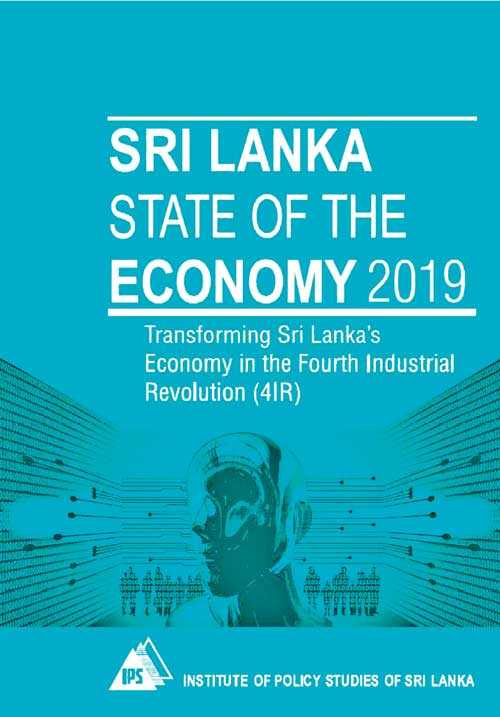Wednesday Feb 12, 2025
Wednesday Feb 12, 2025
Wednesday, 13 November 2019 00:20 - - {{hitsCtrl.values.hits}}

The fourth industrial revolution (4IR) is changing today’s world. Globally, 64% of all migrant travellers has migrated for employment. However, traditional models of employment are increasingly replaced by new developments associated with 4IR technologies. This height of technological advancements in some aspects are creating inadvertent challenges.
4IR for Travel
A major development in the travel and tourism sector in the 4IR, is the disruption of the traditional tourism accommodation model of renting space. Challenging this model, Airbnb became operational from 2009, as a trusted community marketplace for people to list, discover, and book unique accommodations around the world.
While the pre-travel stage is highly influenced by developments such as platforms and market places for researching and booking, the experience in the travel stage is closely intertwined to border control. The 4IR can add length and breadth to increase efficiency in border control by overhauling individual privacy and identity management related to border control, and address issues such as queues, wait time, airline efficiency, and customer experience.
A technology that is increasingly used in identity management and individual privacy is blockchain. Blockchain is a public database or chain that stores cryptographically linked digital information, which is called a ‘block’. The security feature of blockchain is the unique identifier called ‘hash’, which stores cryptographic hash of the previous block, linking all blocks into a chain. Due to its design, tampering with data in a block is nearly impossible.
Worker migration in the 4IR
The global stock of migrants in 2018 is estimated at 266 million. Of which close to two-thirds are migrant workers. In terms of contribution to GDP, cross-border migrants are estimated to have contributed 9.4% of global GDP, or approximately $ 6.7 trillion in 2015. 
Innovative developments of the 4IR have revolutionised the world of work in ways that impact migrant workers. On the one hand, automation of routine work is increasingly displacing workers, including migrant workers. At the same time, when developments in the 4IR such as automation and robotics become embedded into manufacturing processes, sensor technologies and the IoT create large amounts of operational data, which need to be captured, analysed and stored.
This means a requirement for a workforce with higher-tech skills or specialised training compared to the traditional ‘blue collar’ workers, whereby this new breed of worker is identified as the ‘new collar’ or ‘digital collar’ workers. These digital collar jobs do not necessarily require advanced education or traditional education, but relevant skills often obtained through non-conventional education.
Yet, proficiency in new technologies is only one element of the future skills equation. While developments such as AI, cognitive computing, and robotics will lead to new jobs and increased productivity, these developments will also allow workers to focus on the human aspects of work. Despite the emergence of these ‘new collar’ or ‘digital collar’ workers, some ‘human-only’ characteristics such as emotion, intellect, wisdom, and ethics cannot be automated. Thus, it creates a niche or a comparative advantage for humans in employment opportunities.
The 4IR has enabled and reinforced a shift towards a world of working where skilled occupations have become more globally accessible, flexible, and compartmentalised, and performed via virtual labour migration. In future, employers will progressively look for task-specialised work, engage workers in a more flexible manner, and utilise remote staff. These trends will increase job creation in project-based, temporary and freelancing roles, heading towards a structural transformation in the labour market and migrant workers in terms of contractual arrangements, employment relations and occupational profiles.
Way forward for Sri Lanka
[This Policy Insight is based on a chapter written for the ‘Sri Lanka: State of the Economy 2019’, on Transforming Sri Lanka’s Economy in the Fourth Industrial Revolution. The chapter is authored by Bilesha Weeraratne, Research Fellow, of the Institute of Policy Studies of Sri Lanka (IPS).]
Discover Kapruka, the leading online shopping platform in Sri Lanka, where you can conveniently send Gifts and Flowers to your loved ones for any event including Valentine ’s Day. Explore a wide range of popular Shopping Categories on Kapruka, including Toys, Groceries, Electronics, Birthday Cakes, Fruits, Chocolates, Flower Bouquets, Clothing, Watches, Lingerie, Gift Sets and Jewellery. Also if you’re interested in selling with Kapruka, Partner Central by Kapruka is the best solution to start with. Moreover, through Kapruka Global Shop, you can also enjoy the convenience of purchasing products from renowned platforms like Amazon and eBay and have them delivered to Sri Lanka.
Discover Kapruka, the leading online shopping platform in Sri Lanka, where you can conveniently send Gifts and Flowers to your loved ones for any event including Valentine ’s Day. Explore a wide range of popular Shopping Categories on Kapruka, including Toys, Groceries, Electronics, Birthday Cakes, Fruits, Chocolates, Flower Bouquets, Clothing, Watches, Lingerie, Gift Sets and Jewellery. Also if you’re interested in selling with Kapruka, Partner Central by Kapruka is the best solution to start with. Moreover, through Kapruka Global Shop, you can also enjoy the convenience of purchasing products from renowned platforms like Amazon and eBay and have them delivered to Sri Lanka.